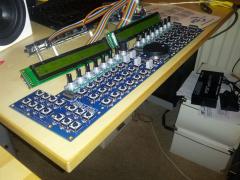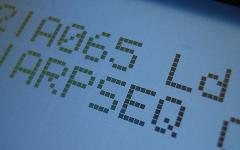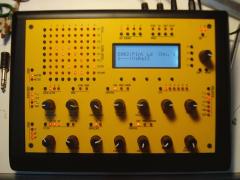Hi ilmenator,
Had to reduce it to 8x8, because i was out of DOUT pins and the MBSEQ enclosure was totally filled up with PCBs (3x DOUT/3x DIN, 4x IIC, Core32 and AoutNG (not installed yet) in a single old Commodore 1541-II case :).
Also, I thought that people wanting to replicate it, might only want to use one DOUTx4 for additional bling - BPM indicator (4 digits) + Step counter (3 digits) = 7 + 8 DOUT pins and the 8 + 8 DOUT pins for the 8x8 matrix fit nicely (31 pins used).
Also, the four position LEDs per track are normally enough, it is just a bling indicator to show which tracks are unmuted and when they will turn around back to step "1"... But, really important non-bling is the step counter, it really helps a lot when recording, or for precisely timed unmutes/mutes...
The track position display should be fairly easily extendable from 8x8 to a 16x8 matrix, the code is quite simple, and one could make it "switchable" in the configuration, if TK. gives the "go".
Regarding the BLM question - i asked, because I did not investigate that hardware option for the MBSEQv4 yet - i knew it was an option the SEQ V3, but did not know that it was still supported... For a drum setup, this is very nice, because you can see the full pattern drum triggers at a glance, but aren´t 16 buttons and LEDs redundant then? Because one track will always be the active one of the current group/pattern and that is already shown/duplicated beneath the 40x2 displays... don´t want to distract you from the idea - the frontpanel looks very nice as you designed it!
Many greets,
Peter









